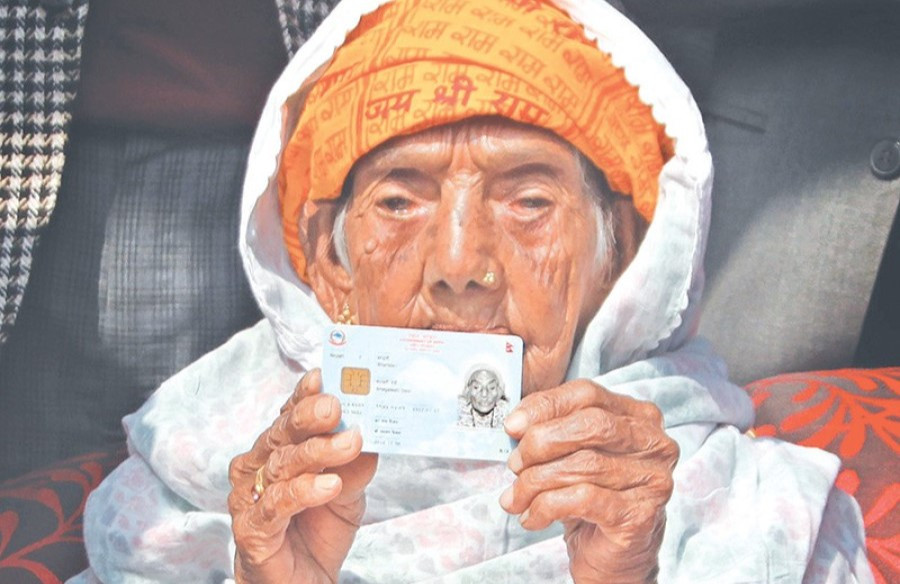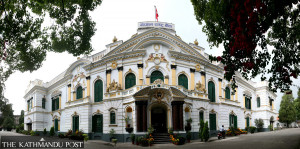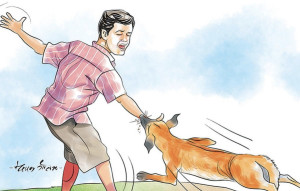Columns
Technological intervention at the bottom
A digitally empowered Nepal will lead to a more equitable, prosperous and inclusive society.
Roshee Lamichhane & Biplab Bhattacharjee
Technology has the potential to uplift marginalised communities and address societal inequalities in the digital era. Nepal has diverse challenges, especially in remote regions, where large sections are denied basic healthcare facilities, quality and affordable education and streamlined, all-inclusive, low-cost and secure financial services. The need to bring in technology-enabled intervention for people lying at the bottom of the pyramid (BOTP) or base of the pyramid (BOP) is crucial.
The global management guru CK Prahalad coined the term ‘bottom of the pyramid’ to describe the poor, marginalised and underserved sections of the economy. This term refers to the poorest two-thirds of the economic pyramid group living in absolute poverty. While there are no official statistics regarding the total population in Nepal at the BOP, a 2022 ADB report indicates that 20.3 percent of the population lived below the national poverty line. In contrast, between 2015-16 and 2019-21, India saw 135 million people escape multidimensional poverty, with a notable decline from 24.85 to 14.96 percent, driven largely by rapid reductions in rural areas from 32.59 to 19.28 percent. Likewise, China has lifted nearly 800 million people out of poverty through diverse targeted interventions over the past 40 years (1980-2022). Both neighbours have brought down the poverty rate and promoted equitable growth through economic reforms, infrastructure development, social welfare programmes and socially impactful technological interventions.
Learning from India
India has adopted several initiatives to deliver government services to those at the base of the pyramid. Different technologies have transformed public service delivery and significantly improved lives.
For instance, Aadhar, a unique citizen identifier, is a cornerstone of inclusive governance in the country. As of September 29, 2023, it had 1,380.8 million enrollments, approximately 97.73 percent of India’s population. By ensuring that resources reach those who need them the most, Aadhar has streamlined access to public welfare schemes, reduced fraud and enhanced transparency.
Using the combination of Jan Dhan Yojana, Aadhar and a Mobile OTP-based system (JAM), India directly transfers subsidies for essential services like cooking gas, education and pensions to beneficiaries’ bank accounts. In the case of healthcare, Aadhaar-linked and technology-enabled Ayushman Bharat health insurance cards with Rs0.5 million per family coverage have provided free healthcare services for large sections of BOP.
As per the Ministry of Health and Family Welfare, Government of India, as of January 2024, 300 million Ayushman Bharat Cards were issued, 62 million free hospital admissions were reported, and out-of-pocket expenditures of Rs12.5 million were saved. By leveraging technology to issue e-cards, track healthcare services and process claims efficiently, this initiative has made healthcare accessible to even the poorest households. As part of the Public Distribution System (PDS), Digitised Ration Cards provide subsidised food grains to eligible households, ensuring food security and reducing leakages through Aadhaar-linked verification.
Moreover, the Unified Payments Interface (UPI), a digital payment system, enables seamless transactions through mobile apps. It has unleashed a lot of innovations from both the public and the private sector in India, resulting in the adoption of digital payment such as PayTM, GooglePay, PhonePe, BHIM apps and QR codes. Other notable technological interventions are e-Shram portal for unorganised workers and the technology-enabled crop insurance scheme Pradhan Mantri Fasal Bima Yojana (PMFBY) powered by remote sensing, drones and digital tools. India has established several innovative tools to help the farming community. National Agriculture Market (e-NAM) helps farmers trade commodities and the Soil Health Card assesses the current status of soil health and determines changes in soil health that are affected by land management.
Learning from China
China’s digital infrastructure has focused on its rural development, leading to remarkable achievements in poverty alleviation and economic inclusion. E-commerce platforms like Taobao and Pinduoduo “Internet+Agriculture model” have provided rural economies access to national and international markets.
Regarding mobile payment systems, apps like Alipay and WeChat Pay have made financial transactions seamless, even in remote locations in the country. In agriculture, China has leapfrogged by using AI-driven solutions for precision farming and automation. In recent times, cutting-edge technologies like AI, big data, The Internet of Things and 3S technology—comprising remote sensing (RS), geographic information systems (GIS) and global positioning systems (GPS)—have been utilised in China to accelerate the modernisation of agriculture and animal husbandry. Further, it has deployed big data analytics for identifying and monitoring poverty alleviation programmes. China has introduced a digital health code system that relies on mobile phone location data to monitor citizens' health conditions and movements. In the judicial delivery systems, the country has introduced AI-driven smart courts to streamline judicial proceedings.
Opportunities for Nepal
Nepal can take inspiration from neighbouring countries and implement technological interventions at the BOP. Many Nepali citizens, especially those in remote regions, lack access to basic healthcare, financial services, quality education and government support due to systemic public administration and delivery system gaps. For example, the phased implementation of Nepal's National Identity Card (NID), scheduled to start on July 16, remains uncertain.
Similarly, while the Nagarik App developed by the Government of Nepal provides a comprehensive platform for accessing legal documents, such technological intervention requires a secure integrated platform that works across all sectors, even without internet access, as many at the base of the pyramid lack cellphones and internet.
Nepal can learn from India’s Ayushman Bharat and China’s digital healthcare system to develop a nationwide health insurance system for its citizens. By adopting best practices from its neighbours, Nepal can address its socio-economic challenges. A digitally empowered Nepal will lead to a more equitable, prosperous and inclusive society, ensuring no one is left behind in the journey toward national development.




 8.12°C Kathmandu
8.12°C Kathmandu.jpg)
















